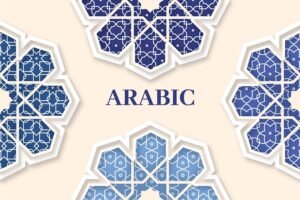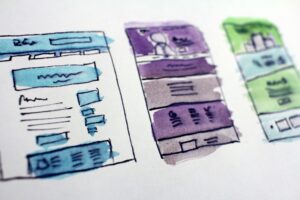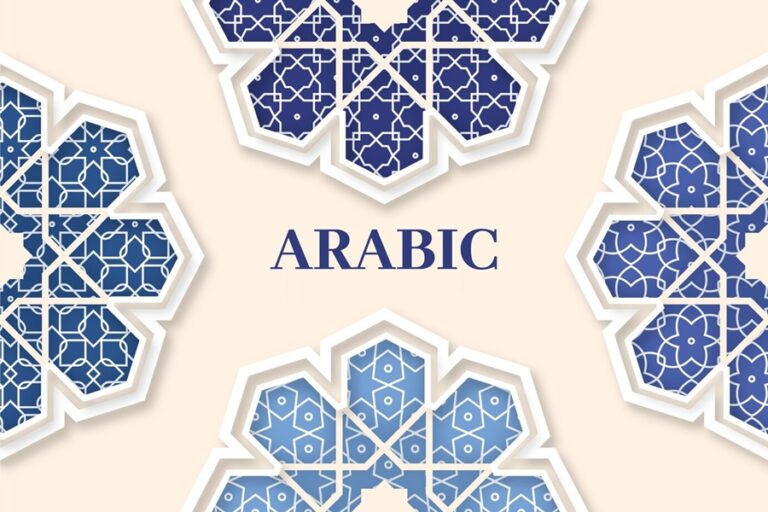Glossary standardization and the use of synonyms in the Arabic language present unique challenges and opportunities, especially in fields like translation, localization, and knowledge management. Arabic is a rich and diverse language with multiple dialects and a vast lexicon, which makes standardization of terms crucial for clear and consistent communication across different contexts.
In this context, the process of creating standardized glossaries in Arabic, particularly when dealing with synonyms, requires careful consideration of regional variations, linguistic traditions, and the need for modern terminologies in technical fields.
Key Challenges in Glossary Standardization and Synonyms in Arabic
Dialectal Variations:
Arabic is spoken in many countries, and each region has its dialectal differences. hese variations affect terminology usage, meaning that a term might have different synonyms depending on the country or region.
Example: The word “car” in Modern Standard Arabic (MSA) is “سيارة” (sayyara), but in Egyptian Arabic, people may colloquially say “عربية” (arabeyya), while in other regions, different colloquial terms might be used.
Classical vs. Modern Standard Arabic:
Modern Standard Arabic (MSA) is used in formal writing and communication across the Arab world, but Classical Arabic, rooted in older literary traditions, is still prevalent in religious and literary contexts. Balancing the two forms in a standardized glossary can be difficult, as some terms in Classical Arabic may have several modern equivalents or synonyms.
Example: The classical word “الكتاب” (al-kitab) means “book,” but in a modern context, particularly in tech and digital spaces, it could also be synonymous with “الملف” (al-milaf) or “file,” depending on usage.
Multiple Synonyms for a Single Concept:
Arabic, being an expansive language, often has multiple synonyms for a single concept. Glossary standardization must decide which term to adopt as the official term while providing clarity on acceptable synonyms.
Example: The word for “education” can be expressed in different ways, such as “تعليم” (ta’lim), “دراسة” (dirasa), or “تربية” (tarbiya). Each word has slightly different nuances but might be used synonymously in different contexts.
Loanwords and Neologisms:
With the rise of technology and globalization, Arabic has had to adopt many new terms, often through loanwords from English or French, particularly in technical fields. Some of these loanwords coexist with traditional Arabic terms, leading to synonymy. Standardizing which term to use (loanword or Arabic equivalent) can be a challenge.
Example: The term “computer” is commonly referred to as “كمبيوتر” (kompyuter) in colloquial Arabic, but the MSA term “حاسوب” (hasoub) is also widely used. Glossary standardization has to decide which form should be predominant, or whether both should be acknowledged as valid.
Cultural and Religious Sensitivities:
Some terms have cultural or religious significance, and their synonyms might carry different connotations in various Arab countries or communities. Care must be taken to select terms that respect these sensitivities.
Example: The term “خليفة” (khalifa) has religious significance in Islamic history, meaning “caliph.” However, it can also be translated in some contexts to mean a “successor” in a more general sense. Glossaries must clarify such distinctions to avoid ambiguity or offense.
Strategies for Glossary Standardization and Synonyms in Arabic
Adopting a Leading Authority for Standardization:
Standardization in Arabic is often overseen by linguistic academies and standardization bodies. The Arabic Language Academy (مجمع اللغة العربية) in Egypt and other similar institutions in Jordan, Syria, and the UAE work to create standardized glossaries for scientific, literary, and technical terms. These bodies help ensure uniformity across the Arab world by endorsing specific terms and managing synonyms.
Example: The Arabic Language Academy in Cairo has standardized terms for modern technologies like “internet” as “الشبكة العنكبوتية” (al-shabaka al-ankabutiya) instead of adopting loanwords like “إنترنت” (internet).
Clear Definitions and Contextual Usage:
When dealing with multiple synonyms, glossaries should provide clear definitions and contextual usage examples for each term, indicating the preferred term for standard usage while recognizing the synonyms.
Example: For the term “teacher,” both “معلم” (mu’allim) and “أستاذ” (ustadh) could be used, but “معلم” might be more appropriate for a school teacher, while “أستاذ” is used for university professors. A standardized glossary would provide definitions and contexts to differentiate these uses.
Mapping Regional Variants:
Glossaries can include regional synonyms and cross-references to help users understand which terms are used where. This approach respects the linguistic diversity within Arabic-speaking communities while promoting standardized terminology.
Example: A glossary might standardize “هاتف” (hatif) for “phone” but acknowledge regional synonyms like “موبايل” (mobile) and “جوال” (jawwal) commonly used in countries like Egypt and Saudi Arabia, respectively.
Creating Specialized Sub-Glossaries:
In technical or professional fields (e.g., law, medicine, or engineering), separate glossaries can be developed to handle the specific vocabulary of that domain. These sub-glossaries can focus on reducing synonym confusion by establishing official terminology while listing acceptable alternatives.
Example: In legal Arabic, terms like “محكمة” (mahkama) for “court” or “قاضي” (qadi) for “judge” could be further clarified in a legal glossary to distinguish them from similar concepts in informal or traditional contexts.
Using Bilingual or Trilingual Glossaries:
For international contexts, bilingual glossaries (Arabic-English) or trilingual glossaries (Arabic-English-French) help clarify standardized terms and their synonyms, especially in technical or academic settings. These glossaries can provide standardized Arabic equivalents for English or French terms, reducing confusion from multiple loanwords.
Example: A trilingual legal glossary might standardize the Arabic term “عقد” (aqd) for “contract,” alongside its English (“contract”) and French (“contrat”) equivalents, reducing variation across documents.
Benefits of Glossary Standardization in Arabic
Consistency in Communication:
Standardization helps ensure that the same term is used across regions, industries, and contexts, improving clarity and reducing misunderstandings.
Facilitating Translation and Localization:
Standardized glossaries support translators and content creators by providing a consistent set of terms to refer to, particularly in technical or legal translations.
Supporting Education and Learning:
Standardized glossaries provide students, researchers, and professionals with a clear reference for the correct terms and synonyms, promoting better learning outcomes.
Preserving Linguistic Integrity:
By managing synonyms and neologisms, glossary standardization helps balance the preservation of traditional Arabic terms with the need to adopt new concepts and technologies.
Example: Standardizing Synonyms in a Medical Glossary
In a medical context, a glossary might need to standardize terms related to common illnesses or medical equipment. For example:
Blood Pressure:
Standard Arabic: “ضغط الدم” (daght al-dam)
Synonym: “الضغط” (al-daght)
In this case, a standardized medical glossary would clarify that “ضغط الدم” (daght al-dam) is the preferred term for formal use, but “الضغط” (al-daght) is a common shorthand synonym that can be used colloquially.
Heart Attack:
Standard Arabic: “نوبة قلبية” (nawba qalbiya)
Synonym: “ذبحة صدرية” (dhahba sadria)
A medical glossary would standardize “نوبة قلبية” for “heart attack” and list “ذبحة صدرية” as a related term with its specific medical nuance.
Conclusion
Glossary standardization in the Arabic language involves managing a complex interplay between dialectal variations, classical and modern terminology, and multiple synonyms. To ensure clear and consistent communication, it is essential to work with linguistic authorities, carefully select standard terms, and provide clear definitions and cross-references for synonyms. This is particularly crucial in specialized fields like law, medicine, and technology, where accuracy and clarity are paramount. By using a structured approach to synonym management and adopting regionally sensitive practices, standardization efforts can promote effective communication and preserve the richness of the Arabic language.









+ There are no comments
Add yours